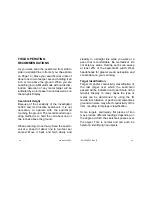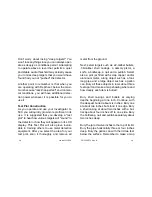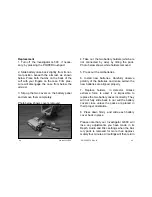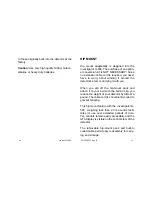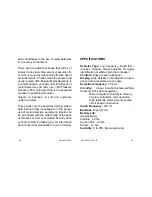
steadily in a straight line while you walk at a
pace that is comfortable. Be methodical. Do
not skip any areas. Overlap each scan sweep
at least 25% of the searchcoil's width. Wear
headphones for greater sound perception and
concentrate on your scanning.
Target Identification
Target ID and/or conductivity classification of
the last target over which the searchcoil
passed will be indicated on Upper Scale of the
Graphic Display. In many cases the type of
metal can be determined by using the ID
Guide. Encrustation or patina and sometimes
ground minerals, may affect conductivity of the
item, resulting in improper classification.
Some targets, particularly flat pieces of iron
may produce different readings depending on
the angle at which the searchcoil passes over
the object. This is normal and can even be
helpful in identifying iron objects.
FIELD OPERATING
RECOMMENDATIONS
As you walk, scan the searchcoil from side to
side in a straight line in front of you. (See photo
on Page 14.) Move your searchcoil at a rate of
about one to two feet per second, holding it an
inch or two above the ground. When you are
searching in an All Metal mode with no discrim-
ination, detection of any metal target will be
indicated by an increase in sound as well as on
the Graphic Display.
Searchcoil Height
Because of the sensitivity of the Investigator
G-500 and its Crossfire searchcoil, it is not
necessary to operate with the searchcoil
touching the ground. The recommended oper-
ating method is to hold the coil about one or
two inches above the ground.
When scanning, do not hurry. Scan the search-
coil at a speed of about one to two feet per
second. Move it back and forth slowly and
33
PN 1529570 Rev B
32
Garrett G-500















